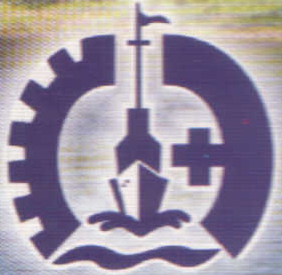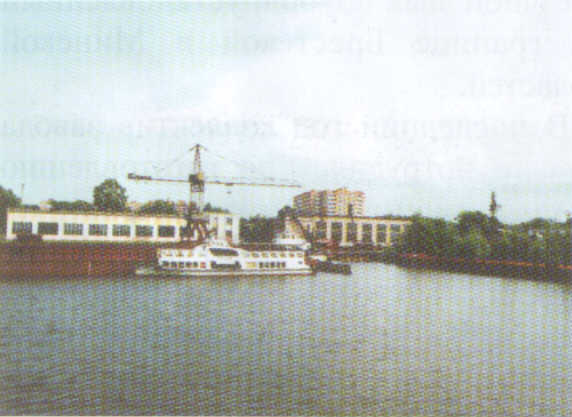
- •Часть 1 настоящего издания shipbuilding, автор Чумаков м. А. Удк 802.0:629.12(075.8) ббк 81.2Англ.Я 7. Вышла в свет в 2007 году в бнту
- •Unit I water vessels
- •Text 1a
- •Text 1b
- •Text 1c
- •Unit II passenger ships
- •Text 2a
- •Text 2b
- •Text 2c
- •Unit III cargo ships
- •Text 3a
- •Text 3b
- •Text 3c
- •Unit IV
- •Specialized vessels
- •Text 4a
- •Text 4b
- •Text 4c
- •Unit V art of shipbuilding
- •Text 5a
- •Text 5b
- •Text 5c
- •Unit VI shipbuilding technologies
- •Text 6a
- •Text 6b
- •1. Deck; 2. Transverse bulkhead; 3. Side frame; 4. Stem; 5. Forepeak; 6. Side stringer; 7. Double bottom; 8. Floor; 9. Afterpeak; 10. Sternpost; 11. Hatch; 12. Carling; 13. Deck beam
- •Synonyms:
- •Antonyms:
- •Text 6c
- •Installations
- •Hull Installation Work:
- •Electrical Installation:
- •3) Installation of the Auxiliary Machinery:
- •4) Installation of Boilers:
- •Unit VII shipbuilding in belarus
- •Text 7a
- •Text 7b
- •Text 7c
- •Belarusian sea port
- •Unit VIII future perspectives of ship-building
- •Text 8a
- •Ships of the future
- •Text 8b
- •Text 8c
- •Intelligent systems of ship automation
- •Supplementary texts
- •Vessel familiarization While Staffing a Liner
- •Minimum Requirements for the Vessel Personnel
- •Systems Of Signals
- •Navy ships of the early xxth century
- •Three from catalina
- •A “baby” in the cats’ family
- •Addison’s shipyards
- •Perspective ships. General requirements and ways of implementing
- •The main directions of the development and the features of the perspective ships
- •Appendix Types of Boat Hulls
- •Major Shipwrecks
- •Directions of a Boat
- •Abbreviations and symbols
- •Some geographical and proper names
- •Vocabulary
- •Contents
Text 7b
PINSK SHIPYARD
In the second half of the XIXth century after the abolition of the serfage the Russian Empire experienced great industrial growth. The development of transport was paid the greatest attention. Pinsk, being a significant trading centre, became a trans-shipment point of the Oginskaya and Dnieper-Bugskaya water systems.
In
the 1880s industrial revolution reached the
sphere
of water transport. The growing industry needed more s teamships
to meet new requirements. In 1885 the shipbuilding and mechanical
yard appeared in Pinsk, with Julia P. O’Brien de Lassie being its
owner. But there wasn’t stability in incoming orders and the
number of workers wasn’t constant either. The most favourable was
the year of 1902 when the plant put out products on Pic.
37. Pinsk Trademark 210,000
roubles with the total staff of 290
teamships
to meet new requirements. In 1885 the shipbuilding and mechanical
yard appeared in Pinsk, with Julia P. O’Brien de Lassie being its
owner. But there wasn’t stability in incoming orders and the
number of workers wasn’t constant either. The most favourable was
the year of 1902 when the plant put out products on Pic.
37. Pinsk Trademark 210,000
roubles with the total staff of 290
workers. But in 1913 the figures were 13,000 and 50 correspondingly.
During WWI the plant property was ransacked and only after the reunion of Belarus in 1939 when the newly established “Western Steamship Company” increased the water

Pic. 38. Pinsk Shipyard
transportation in the area, the ship repair plant was made in Pinsk on basis of the former private shops.
During the WWII the enterprise was considerably damaged but was restored already in 1944-45 and soon got a status of a shipbuilding plant. In post-war years the shipyard became a significant enterprise with more than 500 workers. The range of products included cargo and service motorships, tugs, and pushers. In the 1970s-80s Pinsk shipyard launched up to 12 vessels a year. Since 1992 the demand for shipbuilding production has considerably decreased and the plant has to master new spheres of manufacturing.
Today Pinsk shipyard is a modern industrial enterprise working for the needs of the branch. The total staff is about 160 specialists. There are five main and auxiliary sectors with up-to-date technological equipment. The shipyard work is done in the following directions:
-
production and repair of pushing tugs with capacity of 300 and 500 h. p., pontoons and metalware (hull and welding sectors);
-
overhaul of internal combustion engines (diesel sector);
-
metalware of different purpose, mechanisms and spares, plastic and rubber products (mechanical sector);
-
joinery (woodworking sector).
In 2003 after a long break Pinsk shipyard launched the “O”-class tug motorship of a new series.
Ex. 13. Answer the questions:
1. What was the reason that the Russian Empire experienced great industrial growth in the second half of the XIXth century? 2. What date can be considered the birthday of Pinsk shipyard? 3. Why did the shipbuilding and mechanical yard appear in Pinsk? 4. Who was the founder of Pinsk shipyard? 5. Was there stability in work of the shipyard on the early stage? 6. Why was the shipyard reopened only in 1939? 7. Prove that in the Soviet period Pinsk shipyard became a significant enterprise in its branch of the economy. 8. What is Pinsk shipyard nowadays? 9. What are the main directins of the shipyard work now? 10. Can we say that the shipyard has restored its position by the 21st ctntury? Give your reasons.
Ex. 14. Speak on:
-
the history of the creation and early development of the enterprise;
-
Pinsk Shipyard in the post-war period.
-
the main directions of work at present.
Ex. 15. Abstract the text in brief (7-8 sentences).
Ex. 16. Read and translate the text:
